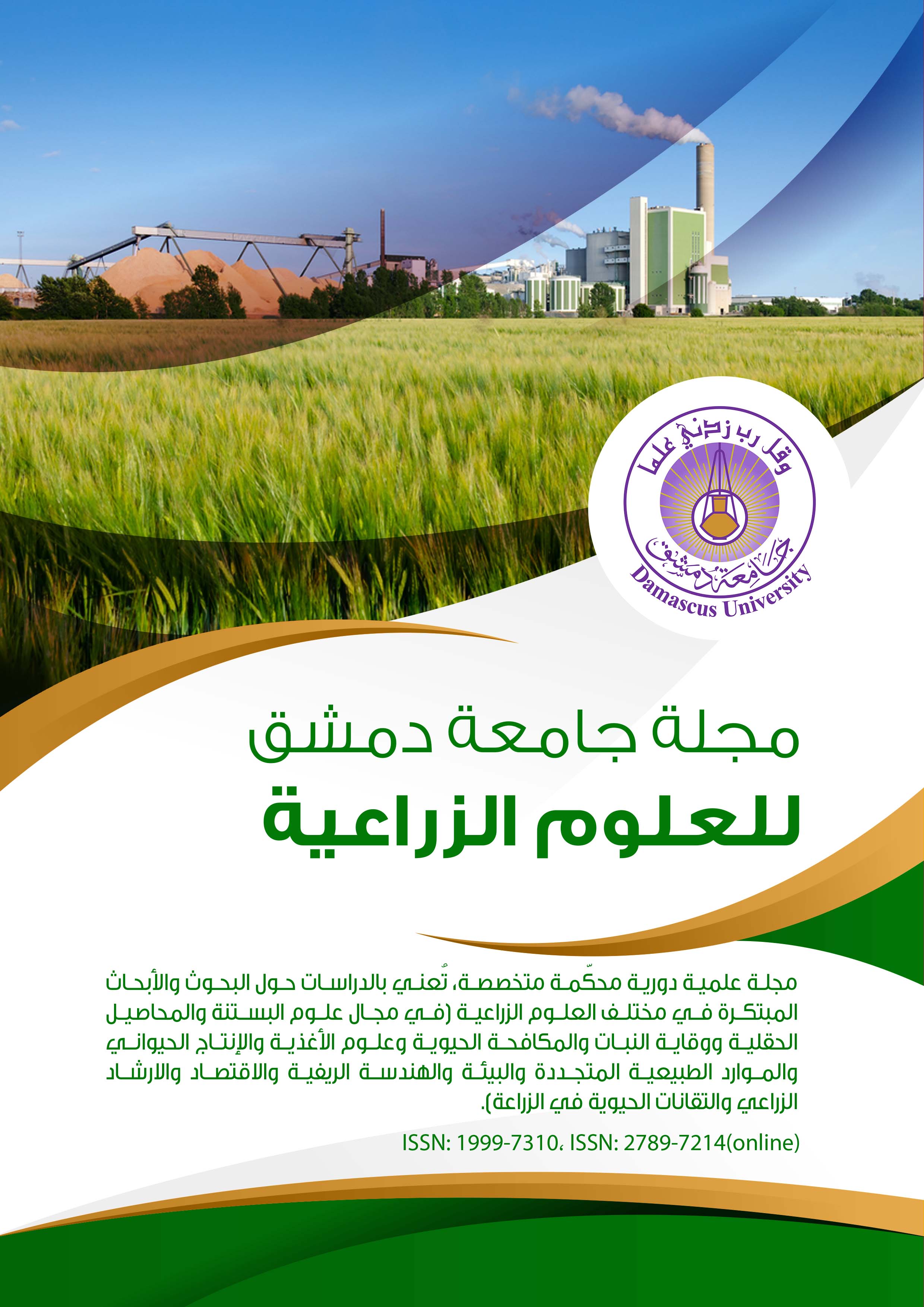تقدير دوال التكاليف واقتصاديات الحجم لمحصول الشوندر السكري الخريفي في منطقة الغاب/سورية
الكلمات المفتاحية:
إنتاج الشوندر السكري، دالة التكاليف، اقتصاديات السعةالملخص
أجريت الدراسة على عينة من مزارعي الشوندر السكري في منطقة الغاب/سورية خلال العروة الخريفية للموسم 2018/2019، وذلك من خلال استمارة أُعدت خصيصاً لهذا الغرض لعينة عشوائية حجمها 80 مزارعاً. وقد هدف البحث إلى تقدير دالة التكاليف الكلية لإنتاج الشوندر السكري الخريفي، وحساب الحجوم الاقتصادية المثلى.
بينت النتائج أن إنتاج الشوندر السكري في عينة الدراسة يتم في مرحلة الإنتاج الاقتصادي، حيث بلغت مرونة التكاليف 0.87، أي أنه أقل من الواحد الصحيح، وهذا ما يدل على أن مزارع العينة هي ضمن مرحلة العائد المتزايد للسعة. غير أن مزارعي العينة عموماً لم يحققوا سوى 84.6% من حجم الإنتاج الأمثل في المدى القصير و المقدر بنحو 51850)) كغ/مزرعة، وبما يعادل 5237.4 كغ/دونم ونسبة66.6 % من حجم الإنتاج المعظم للربح، وهذا يعود بشكل أساسي إلى انخفاض كفاءة استخدام العناصر الإنتاجية. أما على المدى الطويل فقد بلغ حجم الإنتاج الأمثل نحو (5116.3) كغ/ دونم، وهو أعلى بنحو 15.5% من حجم الإنتاج الفعلي. 4429.7كغ/دونم. أما المساحة المثلى على المدى الطويل فقد بلغت (16.9) دونماً؛ أي بزيادة مقدارها 0.7 مرة مقارنةً بالمساحة الفعلية9.9 دنم بالمتوسط. وتبعاً
لذلك تعتبر الفئات الحيازية ذات السعة 16 دونماً هي الأكفأ اقتصاديا، وقد بلغت نسبتها 16.3%، لأنها تحقق الحجم الأمثل للإنتاج وتدني متوسط التكلفة الكلية في المدى الطويل إلى حدها الأدنى مقدراً بنحو 10.1 ل.س/كغ ، وهو أقل بكثير من متوسط هذه التكلفة في المدى القصير، والمقدر بنحو 20.9 ل.س/كغ.

